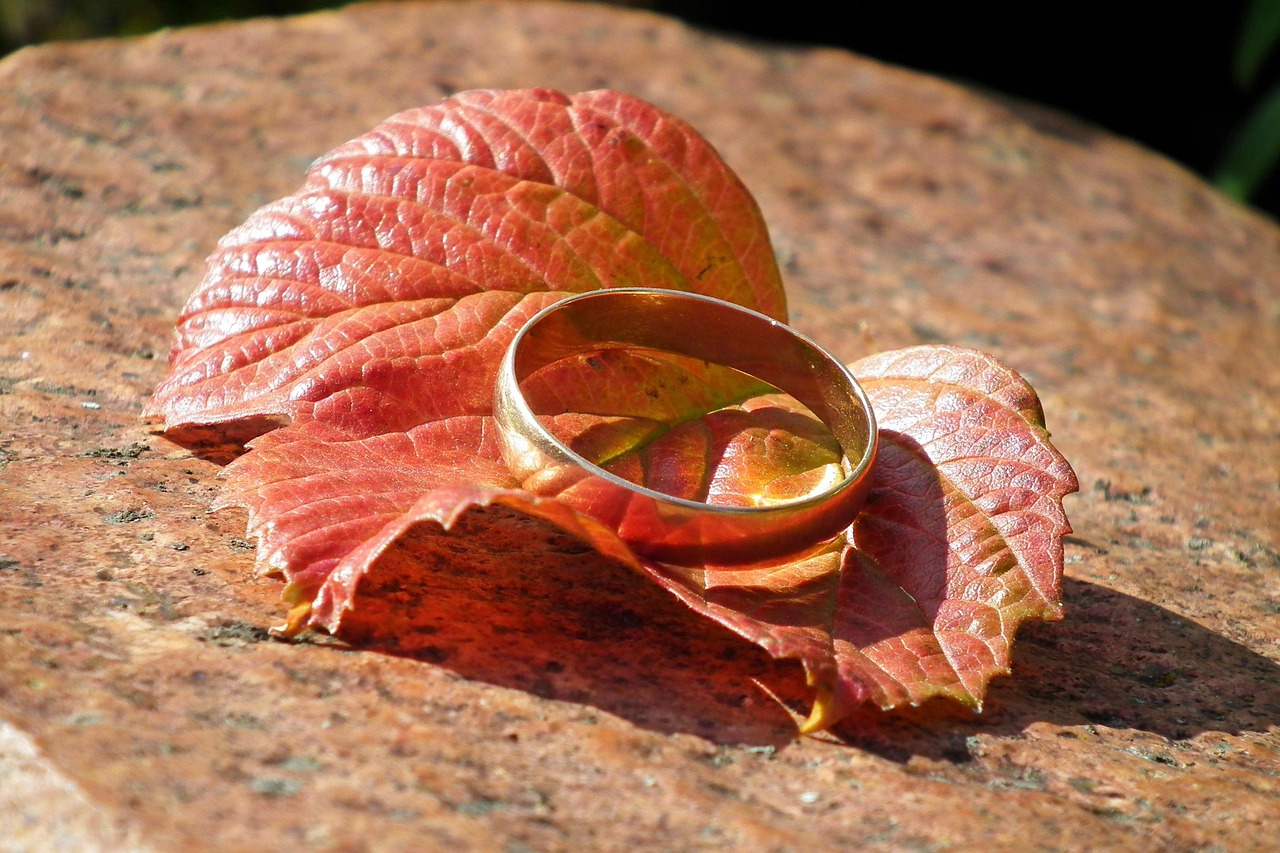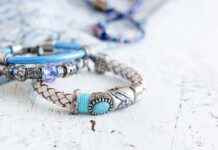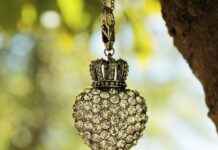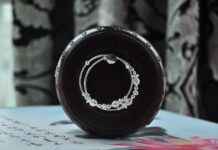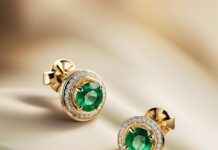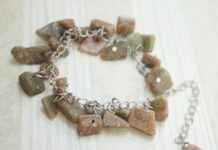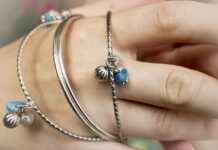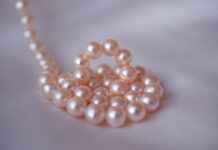This article delves into the rich history and profound significance of wedding bands, examining their evolution, cultural variations, and the emotional connections they embody in marriages around the globe.
The Origins of Wedding Bands
Wedding bands have a storied past that stretches back thousands of years. The earliest recorded use of rings in marriage ceremonies can be traced to ancient Egypt, where the circle symbolized eternity. In this section, we will explore how different civilizations, from the Romans to the Chinese, incorporated rings into their wedding customs, each adding layers of meaning to this enduring symbol.
Symbolism of Wedding Bands
At their core, wedding bands represent eternal love and commitment. The circular shape signifies a bond that has no beginning or end. This section will discuss the deeper meanings that couples attach to their rings, including how they reflect the unique journey of each partnership.
- The Circle of Life: The unbroken circle of the wedding band stands for the infinite connection between partners, a theme prevalent in various cultures.
- Material Choices and Their Meanings: Different materials, such as gold, silver, and platinum, carry distinct meanings. We will explore how these choices reflect personal values and cultural significance.
Cultural Variations in Wedding Bands
Wedding band traditions differ significantly across cultures. This section highlights unique customs and styles, from the intricate designs of Indian wedding bands to the minimalist aesthetics favored in Scandinavian countries. Understanding these variations enriches our appreciation of the wedding band as a global symbol of love.
Modern Trends in Wedding Bands
As society evolves, so do the designs and styles of wedding bands. This section examines current trends, including the rise of personalization and the growing demand for sustainable and ethically sourced materials.
- Personalization and Customization: Many couples choose to create custom designs that tell their unique love story.
- Sustainable and Ethical Choices: The trend towards eco-friendly materials is gaining momentum, reflecting a broader societal shift towards sustainability.
Care and Maintenance of Wedding Bands
To preserve the beauty of wedding bands, proper care is essential. This section provides practical tips on cleaning and maintaining these cherished symbols to ensure their longevity.
- Cleaning Techniques: Regular cleaning methods will be discussed, including safe products to use at home.
- When to Seek Professional Help: We will highlight signs that indicate when it’s time to consult a jeweler for maintenance.
The Emotional Significance of Wedding Bands
Beyond their physical beauty, wedding bands hold deep emotional significance. This section explores the feelings and memories associated with these cherished symbols of love, including their role as family heirlooms passed down through generations.
- Legacy and Heirlooms: The importance of wedding bands as family treasures will be discussed.
- Rituals and Traditions: We will explore various ceremonies that incorporate the exchange of wedding rings, emphasizing their role in celebrating love.
In conclusion, wedding bands are more than just pieces of jewelry; they are powerful symbols of love, commitment, and cultural heritage that transcend time and geography.
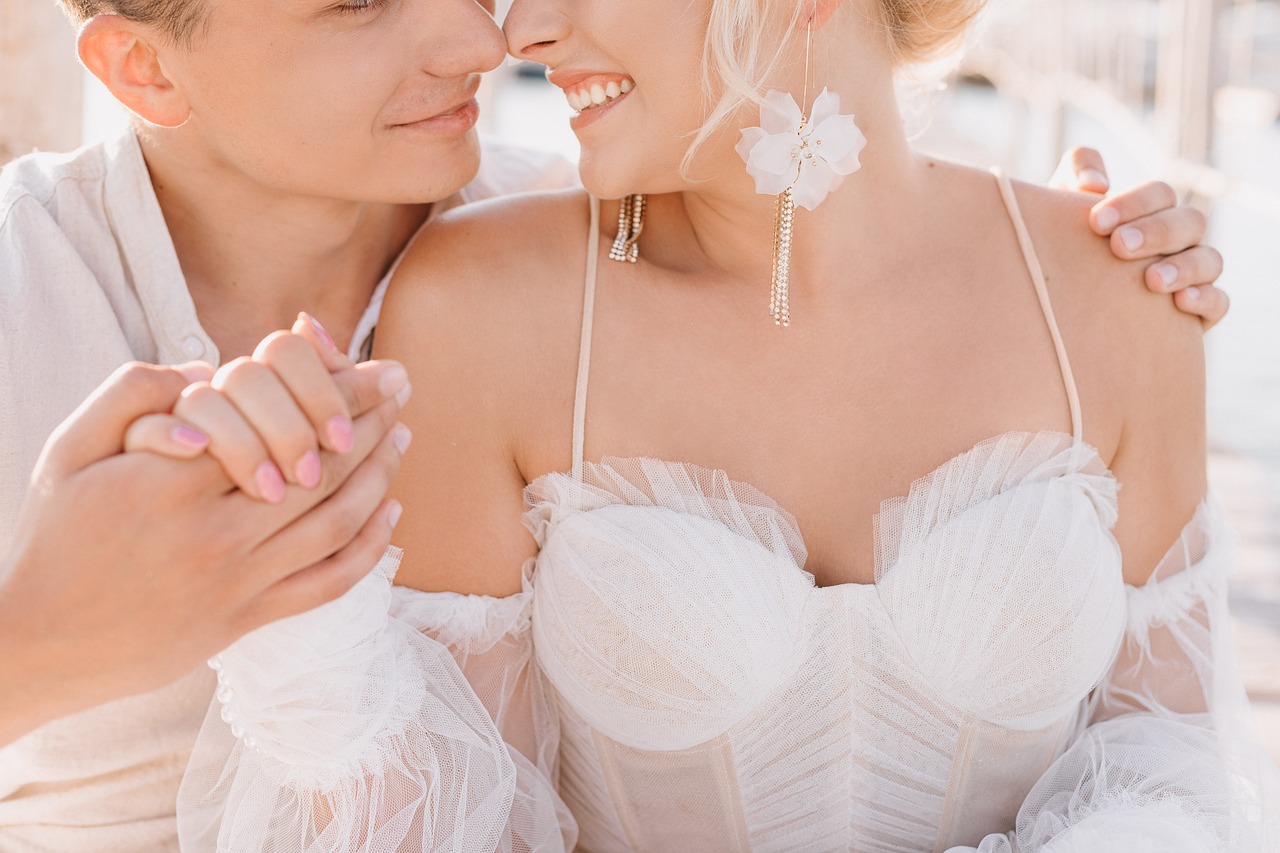
The Origins of Wedding Bands
Wedding bands have a profound history that stretches back thousands of years, serving as a symbol of love and commitment across various cultures. The tradition of exchanging rings during marriage ceremonies can be traced to ancient civilizations, where the circle of the ring represented eternity and the unbreakable bond between partners. This article delves into the origins of wedding bands, highlighting their historical significance and the meanings attributed to them.
The earliest known use of wedding rings dates back to ancient Egypt, where they were made from braided reeds and were considered a symbol of eternal love. The Egyptians believed that the ring finger contained a vein that led directly to the heart, further emphasizing the emotional connection that rings represent. Similarly, in ancient Rome, rings were exchanged during marriage ceremonies to signify a formal agreement between families.
As time progressed, the materials used for wedding bands evolved. In the Middle Ages, gold became the material of choice, symbolizing wealth and status. The use of precious metals reflected the value placed on the union and the commitment between partners. Additionally, the practice of engraving messages or symbols on the inside of the rings became popular, allowing couples to personalize their tokens of love.
Throughout history, wedding bands have transcended cultural boundaries, adapting to various traditions. In many cultures, the act of exchanging rings is accompanied by specific rituals that enhance the significance of the act. For example, in some Eastern cultures, the exchange of wedding bands is a public declaration of commitment, celebrated with family and friends.
In conclusion, the origins of wedding bands are rich and varied, reflecting the deep emotional ties and cultural significance they hold. As we continue to celebrate love and commitment, wedding bands remain a timeless symbol of the promises made between partners.
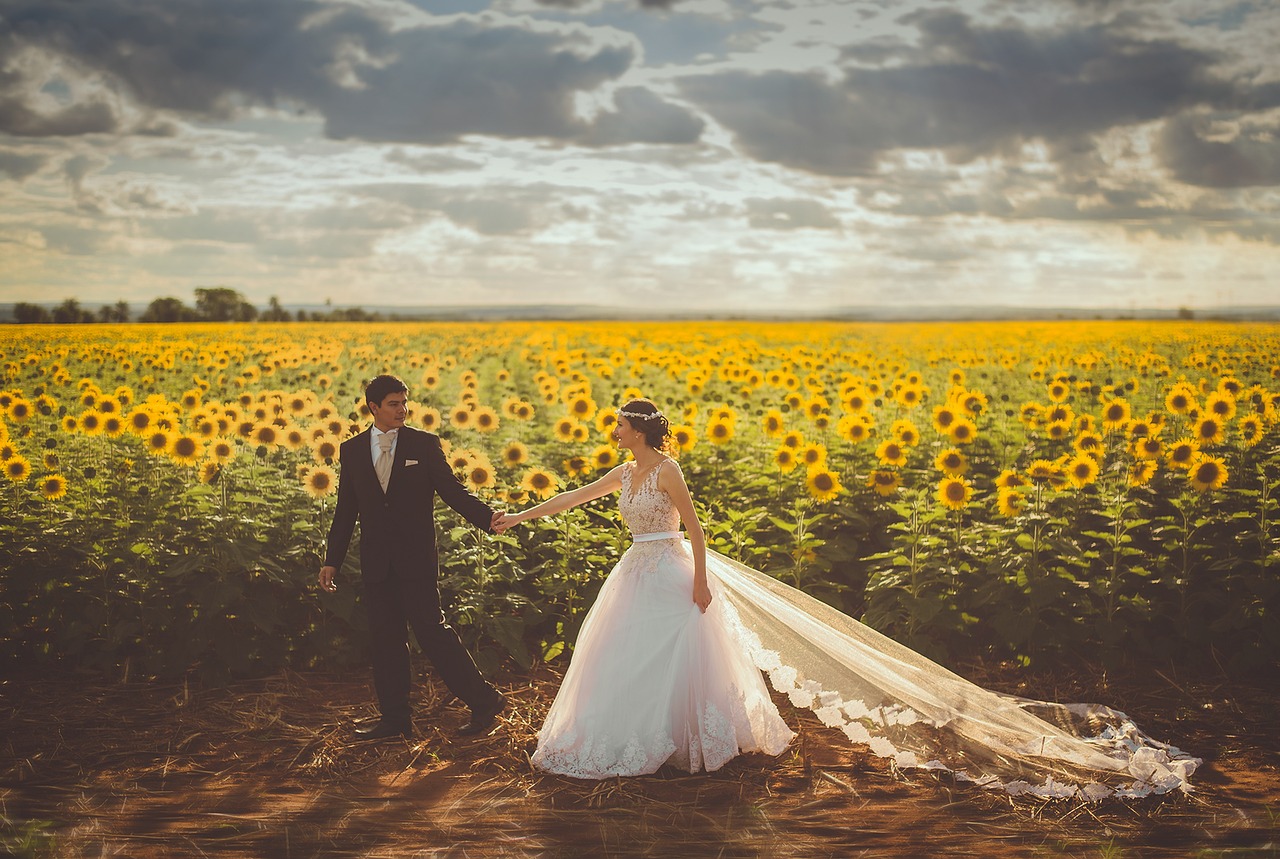
Symbolism of Wedding Bands
Wedding bands are more than just pieces of jewelry; they are profound symbols of love and commitment that have transcended cultures and generations. The is deeply rooted in the idea of an unbreakable bond between partners, representing their vows and promises to one another. In this section, we delve into the various layers of meaning behind these cherished rings.
The most prominent symbol of wedding bands is the concept of eternity. The circular shape of the ring signifies an everlasting love that has no beginning and no end. This idea is prevalent in many cultures, where the circle is viewed as a representation of the cycle of life, unity, and completeness. By wearing a wedding band, couples are reminded of their commitment to support and cherish each other throughout their lives.
Additionally, the material of the wedding band carries its own significance. For instance, gold is often associated with wealth and prosperity, while silver symbolizes purity and clarity. Platinum, known for its durability, represents the strength of the couple’s relationship. As couples choose their wedding bands, they often reflect on what these materials mean to them personally, further deepening the emotional connection to the ring.
Moreover, the act of exchanging wedding bands during the ceremony is rich in symbolism. It is a public declaration of love and commitment, signifying that the couple is embarking on a shared journey. This ritual not only solidifies their bond but also serves as a reminder of their promises to one another, making the wedding band a constant symbol of their love.
In conclusion, wedding bands hold a wealth of symbolic meanings that extend far beyond their physical appearance. They embody the essence of love, commitment, and the journey that couples undertake together. Understanding these deeper meanings can enhance the significance of this beautiful tradition, making the wedding band a cherished emblem of a couple’s unique story.
The Circle of Life
The circular shape of wedding bands is a powerful symbol of eternity and unending love. This concept transcends cultures and traditions, making wedding bands a universal representation of commitment. The circle, with no beginning or end, embodies the idea that love is infinite, a sentiment cherished across various societies.
In ancient Egypt, wedding rings were made from braided reeds or leather, symbolizing the eternal bond between partners. The Egyptians believed that the fourth finger of the left hand contained a vein that ran directly to the heart, known as the “vena amoris,” further enhancing the significance of the ring’s circular shape.
Similarly, in Roman culture, wedding bands were often made of iron, a material that represented strength and permanence. The circular shape reinforced the idea that marriage was a lifelong commitment, one that should withstand the test of time. As time progressed, gold became the preferred material, symbolizing wealth and prosperity in marriage.
In many Eastern cultures, the symbolism of the circle is equally profound. For instance, in Chinese tradition, the golden ring represents harmony and unity. The circular shape signifies the couple’s journey together, emphasizing that their love will continue to grow and evolve.
Moreover, in Hindu weddings, the mangalsutra, a sacred thread, is worn by brides and symbolizes their marital status. Though not a ring, its circular design reflects the same values of eternity and connection that wedding bands convey.
In modern times, couples often choose rings that reflect their personal stories while still honoring the timeless symbolism of the circle. Whether it’s through unique designs or the choice of materials, the essence of the circle remains—a beautiful reminder of the love and commitment shared between partners.
In conclusion, the circular shape of wedding bands is more than just a design choice; it is a profound symbol of love that resonates across cultures. This enduring shape serves as a constant reminder of the promises made and the journey partners embark on together.
Material Choices and Their Meanings
When it comes to choosing a wedding band, the material plays a significant role in both the aesthetics and the symbolism of the ring. Each material carries its own unique meaning, reflecting the values and beliefs of the couple. In this section, we delve into the different materials commonly used in wedding bands, including gold, silver, platinum, and various alternative materials.
- Gold: Often considered the traditional choice for wedding bands, gold symbolizes wealth and prosperity. Its warm hue represents love and commitment. Gold bands can come in various colors, including yellow, white, and rose, each carrying its own connotation. Yellow gold is often associated with classic elegance, while white gold has a more modern appeal.
- Silver: This metal is known for its affordability and versatility. Silver wedding bands symbolize purity and innocence, making them a popular choice for couples who appreciate a more understated look. However, silver is softer than gold and may require more maintenance to keep its shine.
- Platinum: Renowned for its durability and rarity, platinum is a symbol of eternal love. Its natural white sheen does not tarnish, representing a lasting commitment. Platinum bands are often heavier and more expensive, making them a luxurious choice for those seeking a timeless piece.
- Alternative Materials: In recent years, many couples have opted for alternative materials such as tungsten, ceramic, and wood. These materials offer unique aesthetics and can symbolize creativity and individuality. For instance, wooden bands can represent a connection to nature, while tungsten is known for its scratch resistance, symbolizing a strong and enduring bond.
Choosing the right material for a wedding band is a personal decision that reflects the couple’s values and style. Understanding the meanings behind these materials can help couples make a choice that resonates with their relationship.

Cultural Variations in Wedding Bands
Wedding band traditions are a fascinating reflection of the diversity and richness of human culture. Across the globe, different societies have developed unique customs and styles that add meaning and significance to the act of exchanging rings during marriage ceremonies. This section delves into the various ways cultures incorporate their heritage into wedding bands, showcasing the beautiful tapestry of traditions.
| Region | Tradition | Materials Used |
|---|---|---|
| Western Cultures | Exchange of rings during the ceremony | Gold, Platinum, Diamonds |
| Indian Cultures | Use of Mangalsutra and rings | Gold, Silver, Precious Stones |
| Middle Eastern Cultures | Exchange of ornate rings | Gold, Silver, Gemstones |
| African Cultures | Beaded or handmade rings | Beads, Natural Materials |
In Western cultures, wedding bands are often simple yet elegant, typically made of precious metals like gold and platinum. The exchange of rings during the ceremony symbolizes the couple’s commitment to one another.
In contrast, Indian cultures incorporate a variety of symbols, including the Mangalsutra, a sacred necklace, alongside wedding rings. These rings are often adorned with intricate designs and precious stones, reflecting the couple’s status and heritage.
Meanwhile, in Middle Eastern cultures, the exchange of ornate rings is common, often featuring elaborate designs and gemstones. These rings not only signify love but also showcase the couple’s wealth and social standing.
Lastly, in many African cultures, wedding bands may be handmade or consist of beaded designs, representing a deep connection to tradition and community. The materials used often reflect the couple’s cultural background and personal stories.
In conclusion, the cultural variations in wedding band traditions highlight the importance of these symbols in different societies. Each ring tells a unique story, embodying the values, beliefs, and artistic expressions of the cultures they represent.
Western Wedding Band Traditions
are deeply rooted in history and culture, reflecting the values and beliefs of couples who choose to exchange these symbols of love. The act of exchanging wedding bands during ceremonies is a significant moment that encapsulates the commitment and bond between partners.
Traditionally, the exchange of rings occurs during the wedding ceremony, often accompanied by specific vows that emphasize the importance of the rings as symbols of everlasting love. This ritual can be traced back to ancient civilizations, where rings were made from materials like iron and gold, representing strength and prosperity.
In many Western cultures, the wedding band is typically worn on the fourth finger of the left hand, known as the “ring finger.” This tradition stems from the belief that a vein in this finger, called the “vena amoris,” runs directly to the heart, symbolizing the deep connection between partners. The choice of metal for the band, such as gold or platinum, also carries significance, with gold often representing wealth and purity, while platinum symbolizes durability and strength.
Moreover, couples often choose to personalize their wedding bands with inscriptions or unique designs that reflect their individual stories and shared experiences. This customization adds an emotional layer to the rings, making them not just pieces of jewelry but cherished heirlooms that can be passed down through generations.
Another important aspect of Western wedding band traditions is the ceremonial exchange. During the ceremony, the couple typically takes turns placing the rings on each other’s fingers, accompanied by heartfelt promises and declarations of love. This moment is often highlighted by music and the presence of family and friends, further enhancing its significance.
In conclusion, Western wedding band traditions encompass a rich tapestry of history, symbolism, and personal meaning. The exchange of rings serves as a powerful reminder of the commitment couples make to one another, solidifying their bond in a way that is both timeless and deeply personal.
Eastern Wedding Band Practices
Eastern cultures have a rich tapestry of traditions surrounding wedding bands, each reflecting unique cultural beliefs and practices. In countries such as India, China, and Japan, the significance of wedding rings goes beyond mere adornment; they symbolize deep emotional connections and cultural heritage.
- India: In India, the wedding band is often part of a larger set of jewelry that includes the mangalsutra and other traditional pieces. The wedding band is usually made of gold, reflecting prosperity and purity. It is common for brides to wear multiple rings, symbolizing their marital status and the union of two families.
- China: In Chinese culture, wedding rings are typically exchanged during the ceremony, but they hold different meanings across various regions. The rings are often made of gold or jade, symbolizing wealth and longevity. Additionally, the circular shape of the rings signifies eternity and the unbroken bond between partners.
- Japan: Japanese wedding bands, known as yubiwa, are often simple and elegant, reflecting the cultural value of minimalism. Traditionally, couples may choose to wear matching bands, symbolizing their unity. Some couples also incorporate family crests or engravings, adding a personal touch to their rings.
The significance of wedding bands in Eastern cultures is not merely about the material; it is deeply intertwined with the values and beliefs of the society. The act of exchanging rings is often accompanied by rituals that honor familial ties and cultural traditions, making the wedding band a cherished symbol of love and commitment.
In conclusion, Eastern wedding band practices showcase the diversity and richness of cultural traditions. Each country’s unique customs highlight the importance of marriage as a union of not just two individuals, but also their families and communities. As couples continue to embrace these traditions, the wedding band remains a powerful symbol of their love and commitment.
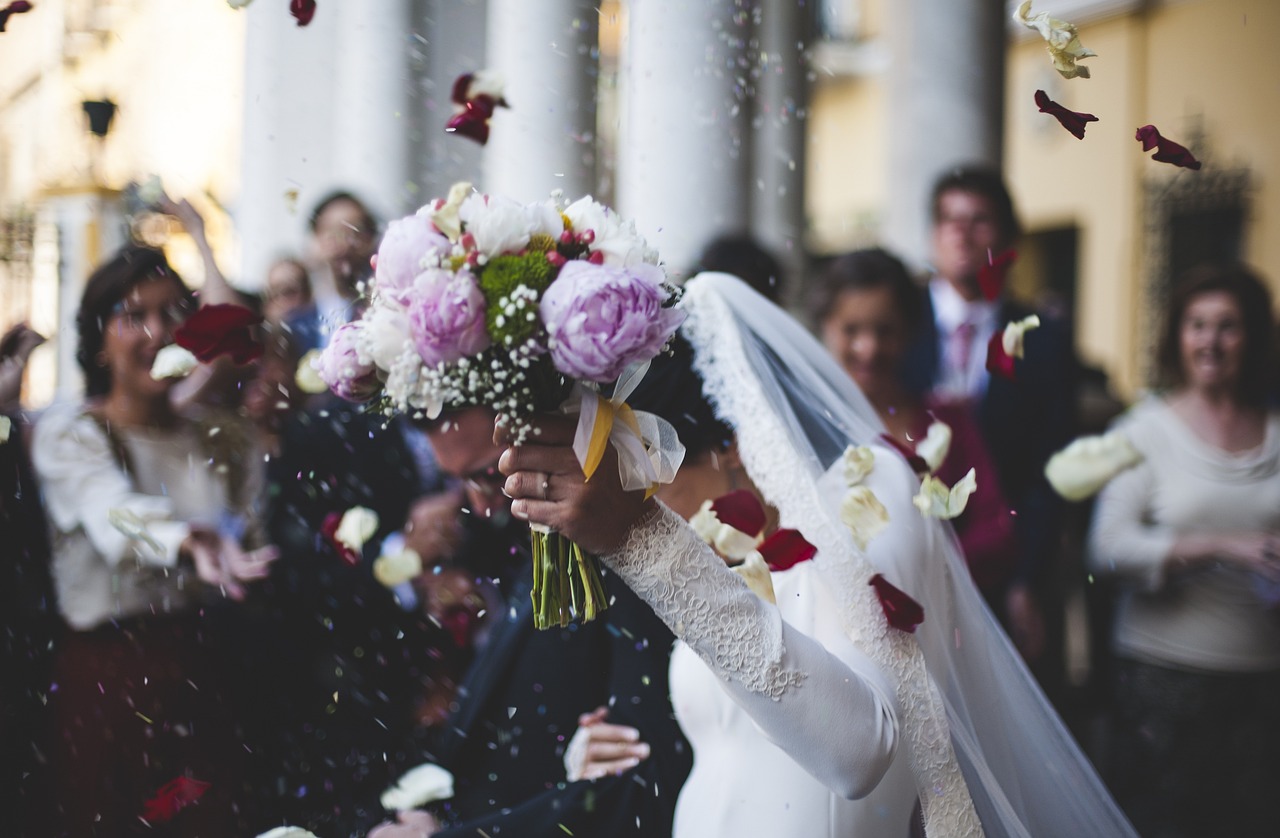
Modern Trends in Wedding Bands
The design and style of wedding bands have undergone significant transformations over the years, reflecting changing tastes, values, and cultural influences. Today, couples are presented with a plethora of options that cater to their unique preferences and lifestyles. This section delves into the current trends in wedding band designs, highlighting what couples are choosing today.
- Minimalist Designs: Many couples are gravitating towards simple and elegant wedding bands. The minimalist trend emphasizes clean lines and understated beauty, allowing the ring to complement the wearer’s personal style without overpowering it.
- Mixed Metals: A growing trend is the use of mixed metals in wedding bands. Couples are opting for rings that combine different materials, such as gold and rose gold, to create a unique and personalized look that reflects their individuality.
- Vintage Styles: Vintage-inspired wedding bands are making a comeback. These designs often feature intricate details, filigree work, and antique finishes that evoke a sense of nostalgia and timelessness.
- Alternative Gemstones: While diamonds have traditionally been the go-to choice for wedding bands, many couples are now exploring alternative gemstones. Stones like sapphires, emeralds, and even lab-created gems offer vibrant colors and unique aesthetics.
- Engravings and Personalization: Personalization is becoming increasingly popular, with couples choosing to engrave their wedding bands with meaningful dates, names, or messages. This trend allows for a deeper emotional connection to the ring.
As couples navigate their wedding planning journey, the choice of wedding bands has become a significant aspect of their celebration. The trends mentioned above not only reflect personal style but also signify a deeper commitment to individuality and sustainability. As we move forward, it will be fascinating to see how these trends evolve, continuing to shape the future of wedding bands.
Personalization and Customization
In recent years, the trend of personalized wedding bands has gained significant popularity among couples. This growing movement reflects a desire for unique expressions of love and commitment, allowing partners to showcase their individual stories through custom designs and engravings.
Many couples are moving away from traditional wedding bands, opting instead for customized pieces that resonate with their personal experiences and values. These bands can feature intricate designs, meaningful symbols, or even personalized engravings that tell a story. For instance, couples may choose to engrave their wedding date, initials, or even a short phrase that holds special significance to them. This level of personalization adds a deeper emotional connection to the ring, making it a cherished keepsake.
The rise of custom jewelry has also been facilitated by advancements in technology, such as 3D printing and online design tools. These innovations allow couples to collaborate with jewelers to create their dream wedding bands from the comfort of their homes. Additionally, many artisans now offer bespoke services, enabling couples to work closely with designers to bring their visions to life.
Furthermore, the trend of personalization extends beyond the aesthetics of the rings. Some couples are choosing to incorporate eco-friendly materials into their custom designs, reflecting their commitment to sustainability. This not only makes their wedding bands more meaningful but also aligns with their values regarding environmental responsibility.
In conclusion, the trend of personalized wedding bands is more than just a fashion statement; it represents a profound way for couples to express their unique love stories. As more couples embrace customization, wedding bands are evolving into distinct symbols of their journeys together, making the act of exchanging rings even more special.
Sustainable and Ethical Choices
As the world becomes increasingly aware of environmental issues, the demand for sustainable wedding bands has surged. Couples are now more conscious of the materials and practices involved in the creation of their wedding rings, seeking options that reflect their values and commitment to the planet.
Eco-friendly materials play a crucial role in this trend. Many couples are opting for rings made from recycled metals, which significantly reduces the need for new mining and its associated environmental impact. Additionally, alternatives such as wood, lab-created gemstones, and ethically sourced diamonds are gaining popularity. These materials not only minimize ecological footprints but also offer unique aesthetics that can be personalized to reflect the couple’s individual style.
Moreover, the ethical sourcing of materials is paramount in the sustainable wedding band movement. Couples are increasingly interested in knowing the origins of their rings. This includes understanding the conditions under which the materials were mined or produced. Brands that are transparent about their supply chains and adhere to fair labor practices are becoming the preferred choice for many.
Another aspect of this trend is the rise of artisan jewelers who focus on sustainability. These craftsmen often use traditional techniques and local materials, creating unique, handcrafted pieces that tell a story. By supporting small businesses, couples can ensure that their purchase contributes to local economies and promotes ethical practices.
In conclusion, the shift towards sustainable and ethical wedding bands is not just a passing trend; it reflects a broader societal change towards responsible consumption. By choosing eco-friendly materials and supporting ethical practices, couples can celebrate their love while also honoring their commitment to the environment.
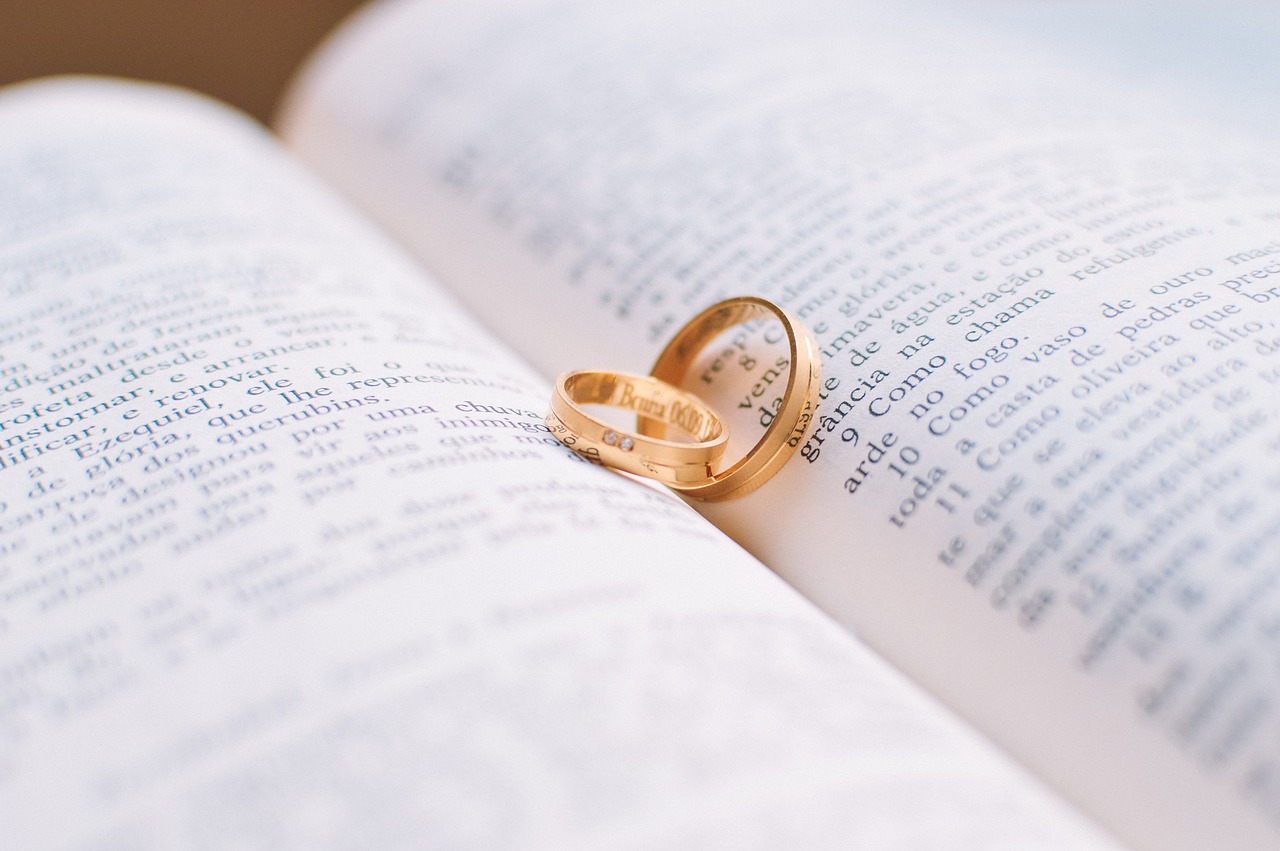
Care and Maintenance of Wedding Bands
Proper care is essential for preserving the beauty of wedding bands. These symbols of love and commitment deserve attention to maintain their shine and integrity over time. In this section, we will provide practical tips on cleaning and maintaining wedding rings to ensure their longevity.
Regular cleaning is vital for keeping wedding bands looking their best. Dust, oils, and grime can accumulate over time, dulling the ring’s surface. Here are some effective cleaning techniques:
- Soap and Water Solution: Mix a few drops of mild dish soap with warm water. Soak the ring for 15-20 minutes, then gently scrub it with a soft toothbrush.
- Ultrasonic Cleaners: For a deeper clean, consider using an ultrasonic cleaner. These devices use sound waves to remove dirt and grime effectively.
- Professional Cleaning: Schedule a professional cleaning at least once a year for a thorough polish and inspection.
When not wearing your wedding band, proper storage is crucial. Here are some tips:
- Jewelry Box: Store your rings in a soft-lined jewelry box to prevent scratches.
- Individual Pouches: Use individual pouches for each ring to avoid tangling and damage.
While regular maintenance is essential, there are times when professional help is necessary. Look for signs such as:
- Loose Stones: If you notice any stones are loose, consult a jeweler immediately.
- Scratches or Dents: Deep scratches or dents may require professional polishing to restore the ring’s appearance.
By following these tips, you can keep your wedding bands beautiful and meaningful for years to come. Remember, a little care goes a long way in preserving the memories and love that these rings represent.
Cleaning Techniques
Maintaining the allure of your wedding band is essential for preserving its beauty and significance. Regular cleaning not only enhances the appearance of the ring but also prevents the buildup of dirt, oils, and other residues that can dull its shine. Below, we explore effective cleaning methods and products that can be easily used at home, ensuring your wedding band remains a stunning symbol of your love.
- Soap and Water Solution: A simple mixture of warm water and mild dish soap can work wonders. Soak your wedding band for about 20-30 minutes, then gently scrub it with a soft toothbrush to remove any grime.
- Baking Soda Paste: For a more abrasive cleaning method, create a paste using baking soda and water. Apply it to the ring and scrub gently with a soft cloth. Rinse thoroughly to ensure no residue is left behind.
- Commercial Jewelry Cleaners: There are many specialized jewelry cleaning solutions available in the market. These products are designed specifically for different types of metals and stones. Always follow the manufacturer’s instructions for the best results.
- Ultrasonic Cleaners: If you want a deeper clean, consider investing in an ultrasonic cleaner. These devices use high-frequency sound waves to remove dirt and grime from hard-to-reach areas of your ring.
When cleaning your wedding band, it’s crucial to avoid harsh chemicals and abrasive materials that could scratch or damage the metal. Additionally, be mindful of the type of stones set in your ring, as some may require special care.
In summary, regular cleaning of your wedding band not only keeps it looking beautiful but also helps maintain its sentimental value. By using these simple techniques and products, you can ensure that your wedding band remains a cherished symbol of your love for years to come.
When to Seek Professional Help
Wedding bands are cherished symbols of love and commitment, but they also require proper care to maintain their beauty and integrity. Knowing when to seek professional help for your wedding band is crucial to ensuring its longevity. Here are some signs that indicate it’s time to consult a jeweler for repairs or maintenance:
- Visible Damage: If you notice scratches, dents, or any other visible damage on your wedding band, it’s a clear indication that professional maintenance is necessary. A jeweler can polish and repair the ring to restore its original shine.
- Loose Stones: For rings that feature gemstones, it’s essential to check for any loose stones. If a stone feels wobbly or is missing, consult a jeweler immediately to prevent further loss or damage.
- Change in Fit: If your wedding band feels too tight or too loose, it may require resizing. A jeweler can adjust the size to ensure a comfortable fit, which is vital for everyday wear.
- Discoloration: Over time, wedding bands can lose their luster or develop discoloration, especially if made from certain metals. A professional cleaning can restore the ring’s appearance and protect it from further tarnishing.
- Allergies or Skin Reactions: If you experience any irritation or allergic reactions while wearing your wedding band, it may be due to the metal composition. A jeweler can help you identify the issue and suggest alternative materials.
In addition to these signs, regular maintenance can prevent potential issues. It is advisable to have your wedding band professionally inspected at least once a year. This proactive approach can help you catch any problems early and keep your ring looking its best.
Ultimately, consulting a professional jeweler not only ensures the longevity of your wedding band but also preserves the sentimental value it holds in your relationship.
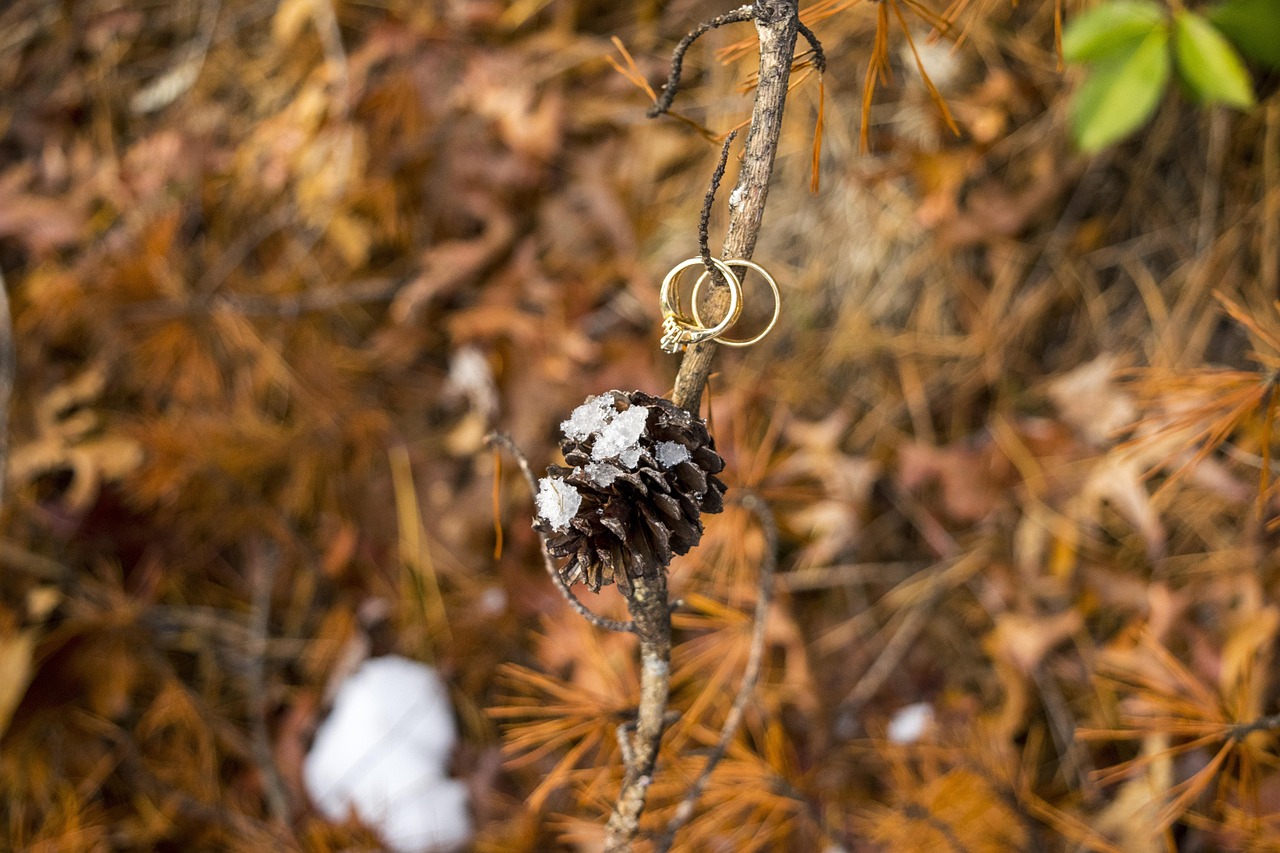
The Emotional Significance of Wedding Bands
Wedding bands are not merely pieces of jewelry; they are profound symbols of love and commitment that carry significant emotional weight. The act of exchanging wedding bands during a marriage ceremony marks the beginning of a lifelong journey together. This moment is imbued with feelings of joy, hope, and promise, as couples pledge their hearts to one another.
The emotional significance of wedding bands extends beyond their physical appearance. These rings often serve as a reminder of the vows taken and the love shared. For many, the wedding band becomes a tangible representation of their relationship, encapsulating memories of special moments, challenges overcome, and the growth of their partnership.
- Feelings of Security: Wearing a wedding band can provide a sense of security and belonging. It symbolizes that one is not alone in the world; rather, they are part of a couple, united in their commitment.
- Shared Memories: Each scratch and mark on a wedding band tells a story. Couples often reminisce about their journey together, recalling the laughter, tears, and milestones that have shaped their lives.
- Connection to Family: Wedding bands can also hold familial significance. Many couples inherit rings from previous generations, adding layers of history and sentimentality to their own love story.
Moreover, the traditions surrounding wedding bands can enhance their emotional impact. From the moment of exchange to the rituals that accompany this act, each step is steeped in meaning. Couples often find comfort in these traditions, knowing that they are part of a larger narrative of love and commitment that spans cultures and generations.
In conclusion, wedding bands are much more than decorative items. They embody the essence of a relationship, serving as a constant reminder of the love and promises shared. As couples wear their wedding bands, they carry with them the emotions, memories, and connections that define their journey together.
Legacy and Heirlooms
Wedding bands often hold a special place in the hearts of couples, transcending their physical form to become cherished family heirlooms. The act of passing down wedding bands through generations is not just a tradition; it is a profound way to connect with family history and legacy. These rings carry stories, memories, and emotions that bind families together, making them invaluable treasures.
The sentimental value of wedding bands is immense. Each ring tells a unique story, often reflecting the love and commitment shared between partners. When couples decide to pass their wedding bands to their children or grandchildren, they are not merely handing over a piece of jewelry; they are sharing a piece of their love story. This act symbolizes the continuity of love across generations, reinforcing the idea that love is eternal.
Moreover, the tradition of handing down wedding bands can strengthen family bonds. It creates a sense of belonging and connection to one’s heritage. For many, wearing a parent’s or grandparent’s wedding band is a way to feel closer to their loved ones, even if they are no longer present. It serves as a reminder of the values and commitments that have shaped the family over the years.
In addition to their emotional significance, wedding bands can also hold historical value. They may represent the era in which they were made, showcasing the craftsmanship and style of that time. This aspect can spark conversations about family history and traditions, further enriching the family narrative.
Ultimately, the importance of passing down wedding bands lies in their ability to connect generations. These rings are more than just symbols of love; they are tangible representations of family legacies, making them truly priceless.
Rituals and Traditions
Wedding bands hold a special place in various around the world. The exchange of wedding rings is often a significant part of marriage ceremonies, symbolizing the commitment and love between partners. This article delves into the diverse ceremonies and cultural practices that incorporate the exchange of wedding bands.
In many cultures, the act of exchanging wedding bands is steeped in historical significance. For instance, in Western traditions, couples typically exchange rings during the wedding ceremony, often accompanied by vows that reinforce their commitment. This moment is not just about the physical act of giving a ring but also about the emotional bond it represents.
In Eastern cultures, the traditions surrounding wedding bands can differ significantly. In countries like India, the exchange of rings is part of a series of rituals that may include the tying of the mangalsutra or the application of sindoor, signifying the bride’s marital status. These rituals emphasize the importance of the wedding band as a symbol of union and fidelity.
Moreover, the design and material of wedding bands can also reflect cultural values. For example, in some cultures, gold is preferred for its association with wealth and prosperity, while in others, silver or platinum may be more common. The choice of material often carries its own set of symbolic meanings and reflects the couple’s personal preferences.
In addition to cultural variations, modern trends in wedding bands have introduced new rituals. Couples today often personalize their rings with engravings or unique designs, making their wedding bands a reflection of their individual love stories. This trend highlights the evolving nature of wedding traditions, where personalization and meaning take center stage.
In conclusion, the rituals and traditions surrounding wedding bands are as diverse as the cultures they originate from. Whether through the exchange of rings during a ceremony or the incorporation of specific materials and designs, wedding bands remain a powerful symbol of love and commitment, transcending cultural boundaries.
Frequently Asked Questions
- What is the historical significance of wedding bands?
Wedding bands have been used for thousands of years, symbolizing eternal love and commitment between partners. Their circular shape represents the endless nature of love, making them a powerful symbol in marriage ceremonies.
- What materials are commonly used for wedding bands?
Wedding bands can be made from various materials, each carrying its own meaning. Popular choices include gold, silver, and platinum, while some couples are opting for alternative materials like titanium or wood to reflect their personal style.
- How do wedding band traditions vary across cultures?
Different cultures have unique customs surrounding wedding bands. For instance, in Western traditions, rings are exchanged during the ceremony, while Eastern practices may incorporate specific rituals that reflect their cultural heritage.
- What are the current trends in wedding band designs?
Modern trends include personalization and customization, where couples create unique designs that tell their love story. Additionally, there’s a growing interest in sustainable and ethically sourced materials, reflecting a commitment to both love and the environment.
- How should I care for my wedding band?
To keep your wedding band looking its best, regular cleaning is essential. You can use mild soap and water at home, but if you notice any damage or wear, it’s wise to consult a professional jeweler for maintenance.
- What emotional significance do wedding bands hold?
Beyond their physical beauty, wedding bands carry deep emotional weight. They often symbolize shared memories and feelings, and many couples cherish them as family heirlooms, passing them down through generations.

